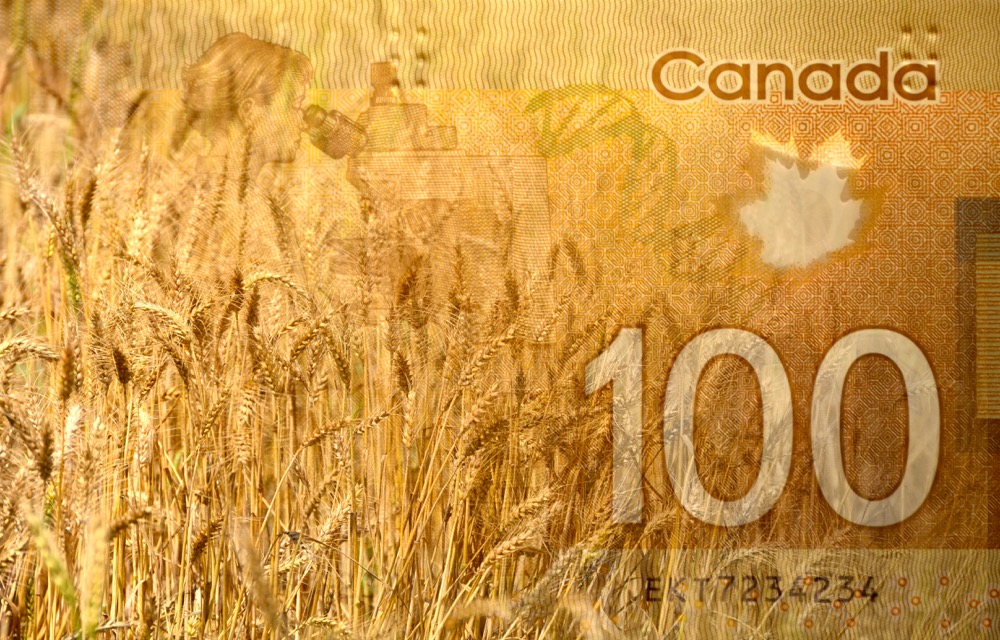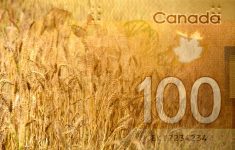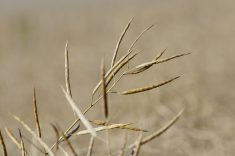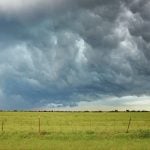Ontario’s grain and oilseed growers will get first crack at enrolling in the province’s permanent Risk Management Program (RMP) starting Aug. 2, followed by livestock producers in the fall.
The provincial government on Wednesday released the details on the RMP, which the province pledged in its March budget to move beyond the pilot stage and expand to the cattle, hog, sheep and veal sectors.
The RMP, to be delivered by the province’s ag program delivery agency Agricorp, is meant as a companion to the joint federal/provincial production insurance and AgriStability programs. The province will fund RMP at the full amount of its usual 40 per cent share.
Read Also

Prairie Wheat Weekly: Prices mostly lower
Cash prices for spring wheat and durum across the Canadian Prairies incurred losses almost across the board during the week ended Aug. 28.
Specifically, the province’s program treats RMP payments an advance on the province’s 40 per cent share of a producer’s AgriStability payment, in which an eligible producer would keep the greater of the two payments. The 60 per cent federal share of the AgriStability payment is unaffected.
Dubbing 2011 as the RMP’s “transition year,” the province said it will waive farmer premiums for the 2011 program.
To take part, producers will need to enrol all their production in RMP, sign up for Agristability (voluntary for 2011 only, because the deadline has passed) and have a Premises ID number (voluntary for 2011, required for 2012 and beyond).
Eligible grain and oilseed producers must also be covered by production insurance (again, voluntary for 2011, required in 2012 and beyond).
The province said also plans to hold a series of “information sessions” on the various RMPs later this summer. Specifics on each of the programs are available online.
The Ontario Federation of Agriculture (OFA), in a separate release Wednesday, hailed the RMP as a “much-needed” program allowing farmers to “adapt to market circumstances, stabilize farm income and minimize the effect of volatility and price fluctuations.”
The province’s “acceptance and commitment to underwriting farm market price risk is a huge accomplishment for Ontario agriculture and signals recognition for the value to all Ontarians of a viable agricultural industry,” OFA president Bette Jean Crews said in the province’s release.
“The request for the remaining 60 per cent is before the federal government, to create RMPs that are bankable and predictable across Canada,” the OFA said.
Crops
The province’s Grains and Oilseeds RMP will cover Ontario-grown corn, soybeans, wheat, canola, barley, oats, beans, sunflowers, rye, buckwheat, field peas, flax, triticale, millet, mustard, sorghum and spelt.
For 2012, premiums for grain and oilseed growers will be calculated by comparing support levels and market prices using “historic, current and future data,” with a minimum premium of $25 per crop covered, regardless of acreage. The minimum premium rate for a standard unit of production will be set before the 2012 enrolment deadline, the province said.
For each crop, payments will be calculated twice a year, starting with a pre-harvest (typically fall) payment, based on the average of forward contract prices for six months prior to the harvest of each major crop. The post-harvest (typically spring) payment will be based on the average of cash or spot prices for six months during or after harvest.
The cost of production is based on an average of three years of data from a sample of farms in the province, and updated to the current year using the Eastern Canada Crop Production Farm Input Price Index.
If the support level for a grain and oilseed crop exceeds the market price in either pricing period, a program payment is triggered.
The crops program does not cover fruits, vegetables, herbs, spices, honey, mushrooms or maple syrup. Those will be covered under a separate Self-Directed Risk Management Program (SDRM), for which producers must report eligible crop sales on a T1163 tax form to the Canada Revenue Agency or on a Schedule “A” to Agricorp.
SDRM-eligible producers must also meet the minimum allowable net sales (ANS) of $5,000 to be eligible for the province’s matching deposit.
Cattle
The Cattle RMP will require producers to enroll all their eligible production in no more than one of three categories: cow-calf, backgrounder or feedlot. The province said forms will be available this fall but didn’t specify when.
Producers in 2012 and beyond can opt to make either one up-front premium payment, payments twice per year (for cow-calf producers) or quarterly (for backgrounders and feedlot).
Cattle RMP premiums will also be calculated by comparing support levels and market prices using historic, current and future data. The minimum premium charged will be $25 under each of the cattle program categories.
The RMP support level for cattle and other livestock will be based on cost of production multiplied by a farmer’s chosen coverage level — 100, 90 or 80 per cent.
In the cow-calf category, payments will be calculated twice a year (end of June and end of December), while in the backgrounder and feedlot categories, payments will be calculated weekly and paid quarterly.
Producers may also transfer cattle to the next program category without a sale, the province said. A producer who finishes cattle from birth will be able to submit a certified weigh slip to Agricorp to trigger a payment instead of waiting until the animal’s final sale.
For the 2011 program year, payments to cattle producers will be calculated by pro-rating support levels and market prices against the available allocation, the province said. Producers will need to apply in the fall and report actual pounds produced and sold by category from Jan. 1 to Sept. 30, 2011 and projected pounds produced and sold or transferred by category from Oct. 1 to Dec. 31, 2011.
An initial payment will be made in December and a final payment will follow using actual sales or transfer information for Oct. 1 to Dec. 31, 2011. Payments will be then adjusted “based on final participation rates,” the province said.
Hogs
The Hogs RMP program will be similarly divided into early wean, feeder and grower/finisher categories. Producers will be able to enrol in no more than one of the three categories.
Hog producers will also be charged a minimum premium of $25 per participant in 2012 and beyond. Hog producers can opt to pay premiums quarterly.
Hogs RMP application forms for 2011 are to be available in September, the province said Wednesday.
In the hog program, payments for the 2011 program year will be based on “historic market prices and cost of production data,” the province said. Cost of production per hog in each weight category will be based on an average drawn from data from a sample of Ontario hog farms.
Eligible hog, sheep and veal producers will need to apply in the fall and report actual sales to date by category from Jan. 1 to Sept. 30, 2011, and projected sales by category from Oct. 1 to Dec. 31, 2011.
Payments to eligible producers in those categories will be made in December 2011 using actual plus projected sales information at 75 per cent of the estimated payment rate, followed later by a final payment based on actual sales data for October to December 2011, adjusted based on final RMP participation rates.
Sheep
Lambs between 30 and 126 pounds of live weight and under the age of one year are eligible for the Sheep RMP, the province said. Lambs must have been owned by the producer for at least 30 days, and must have spent that amount of time in Ontario.
For sheep and veal producers, the 2011 transition payment will be based on 2010 market prices and cost of production numbers.
Cost of production for the Sheep RMP will be the estimated cost of producing a 75-pound lamb during the program year, based on an average drawn from data from a sample of Ontario sheep farms, and will include feed and yardage costs and, if applicable, the cost of buying the animal.
Forms for the Sheep RMP will be available in the fall, the province said, but didn’t give an exact date.
Veal
Only finished veal calves that a producer has owned for at least 90 days and that have spent that amount of time in Ontario are eligible for the Veal RMP, the province said.
Forms are to be ready in September for the veal program, which is to be based on the industry average of a 100-pound bob calf taking 20 weeks to reach a finished milk-fed live weight between 340 and 675 pounds — or taking 32 weeks to reach a finished grain-fed live weight between 600 and 752 pounds.
Finished animals are deemed to have a finished live weight of 450 pounds for milk-fed veal and 725 pounds for grain-fed veal.
Veal producers won’t be able to submit a payment application for any animal that exceeds a carcass weight of 410 pounds, the province said.
Cost of production for the Veal RMP is to be calculated when animals are sold and to be based on an industry average drawn from data from a sample of farms, and would include animal purchase costs, feed costs and yardage costs. The costs will be based on recent industry costs during the growth phase, working backwards from the sale date.
The minimum premium for the Veal RMP for 2012 and beyond will $25 per program year per participant, and may be paid quarterly.














